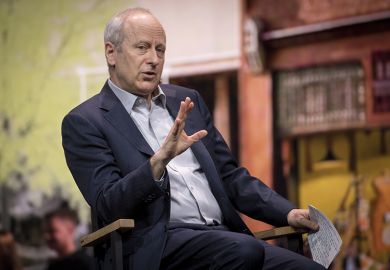Mark Rothko was anything but an instinctive painter. He thought deeply about his work, which was rooted in ideas, but as far removed from narrative as could be. His published statements are few, so it comes as something of a surprise to discover that he left the typescript of an unfinished book among his papers. This text had long been rumoured to exist but came to light only by chance in 1988 and has now been published in its incomplete state, in a carefully edited version prepared by his son, Christopher.
It seems that Rothko resorted to writing in about 1940-41, when he was suffering from a bout of depression induced by anxieties about the future direction his work might take and fuelled by his estrangement from his first wife. At this critical juncture in his development, when he was moving away from his earlier figurative style and eagerly absorbing elements of surrealism, he appears to have taken the best part of a year out, getting to grips with a creative block by immersing himself in philosophy and mythic literature. However, the exact sequence of events is uncertain, and the imprecise dating of the "the book" makes it impossible to determine whether it resulted from, or precipitated, the move to surrealism in about 1940, or the development of a more abstract version of this a couple of years later. It certainly also presaged the move to the "pure" abstraction of his mature style, in 1946-47. The text embodies a struggle for self-comprehension, accentuated by his sense of spiritual isolation and resentment at his lack of success, but it also helped, ultimately, to provide him with a way out.
While the publication of this text is a major event, it is also a source of frustration, compounded by the fact that Rothko makes very few references to his own troubled times or to the work of his contemporaries. We need to recall that he was writing at the height of the Marxist debate in the US about the place of art in bourgeois society and the function of the avant-garde. Only a short time before, in 1936, Alfred H. Barr had laid out a near-dialectical evolutionary model for the history of modern art since cubism, in his two ground-breaking exhibitions for the Museum of Modern Art in New York: Cubism and Abstract Art - with its rational and abstract tendencies - and Fantastic Art , Dada and Surrealism - with its romantic, irrational and, most often, figurative connections.
In autumn 1939, Clement Greenberg had published his first, widely discussed, essay on "Avant-garde and kitsch" in the Partisan Review , in which he highlighted the decadence of art in Western capitalist society and the role of the avant-garde in providing the conditions for its regeneration, through the pursuit of purity and a careful consideration of its "legitimate boundaries" (what T. J. Clark subsequently referred to as a kind of "Eliotic Trotskyism").
The canvas the artist sketched out in his text was broad enough to include the entire sweep of civilisation, from antiquity to the present day, taking in ancient and "primitive" cultures along the way, culminating in the heroic struggle of the avant-garde to restore to art something of the heroic qualities it had lost in an age of decadence and decline. Rothko, like Greenberg, was writing from outside, and from a position of apparent rejection.
Like Greenberg, too, he felt nostalgia for the greatness of past ages, such as the Renaissance, when "the rapport between the artist and the world seemed to have been ideal" and a fervent belief in the redemptive value of art. He was severe in his analysis of "the confusion between art and that which resembles it" - that is "high" art and the "kitsch" (although he does not use this word) promoted by totalitarian regimes. He maintained an elevated conception of the mission of the artist, poet or philosopher to express a conception of reality in concrete form and "deal with the verities of time and space, life and death, and the heights of exaltation as well as the depths of despair".
Writing did not come naturally to Rothko. His sentences are sometimes leaden, his syntax confusing and his terminology imprecise - much as one might expect from the autodidact he was on questions of philosophy and aesthetics. But what transcends these shortcomings is the fervour with which he grapples, in the wake of Cézanne, to define "a plastic equivalent for Plato's notion of abstract ideas", that might alone serve to elevate the expression of subjective emotion onto a higher plane: "To this end, any of the plastic elements can serve. The fundamental unity of conception lies in the kind of space the artist employs, and the kind of space he uses will determine how colour, line, texture, chiaroscuro and every other item contributes to this movement."
Here, already, we may detect the germs of his future development and a way out of the impasse in which he had been trapped. Add to this the mystical dimension and the element of spiritual yearning, and we come closer than before to understanding his ultimate vision of "The Artist's Reality".
Henry Meyric Hughes is a curator of international art exhibitions and is president of the International Association of Art Critics.
The Artist's Reality: Philosophies of Art
Author - Mark Rothko
Publisher - Yale University Press
Pages - 136
Price - £16.95
ISBN - 0 300 10253 4


